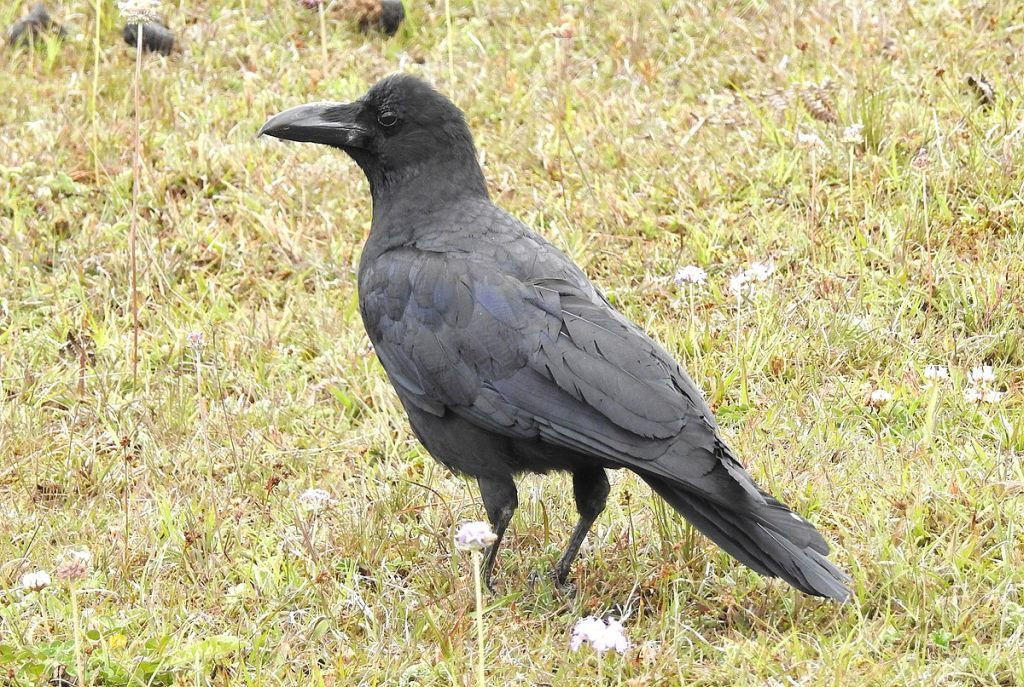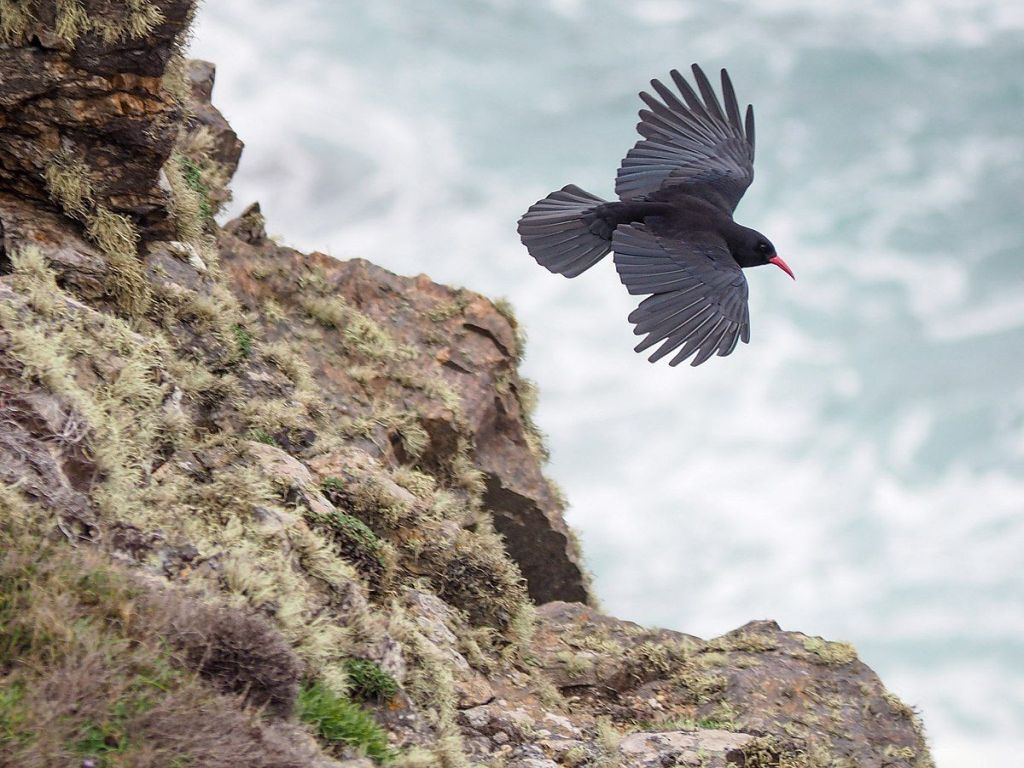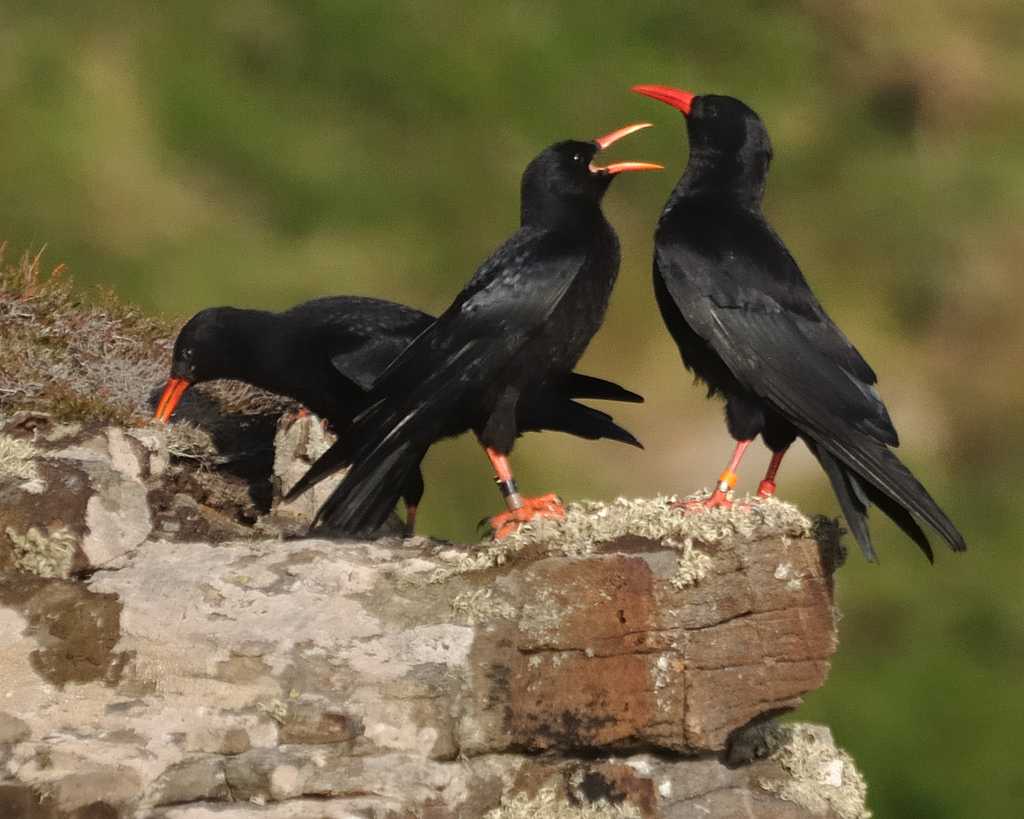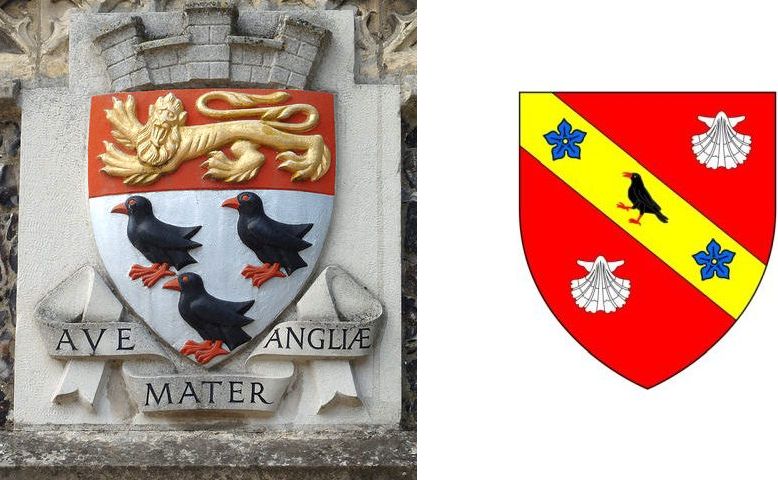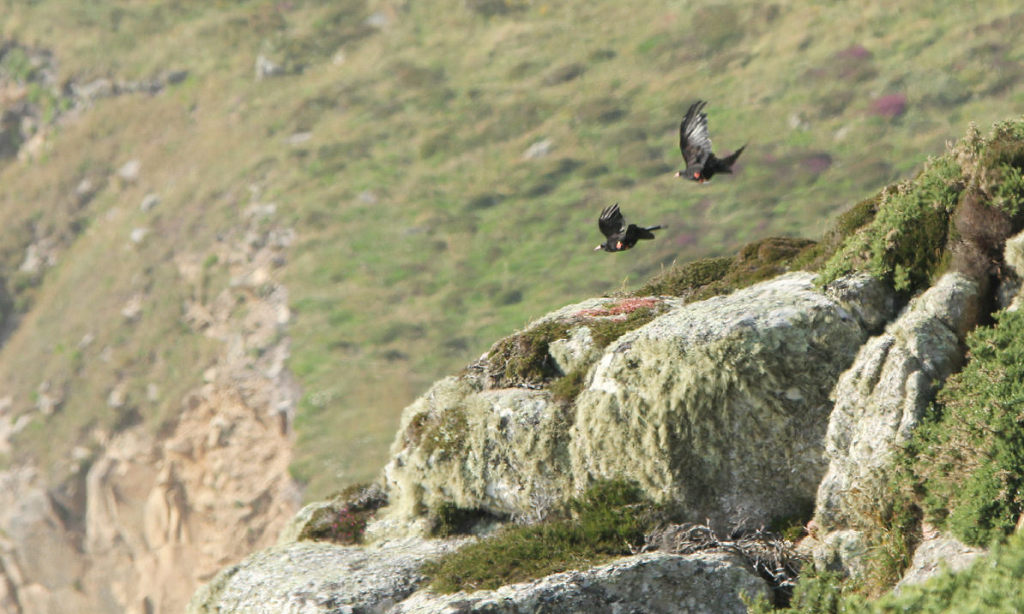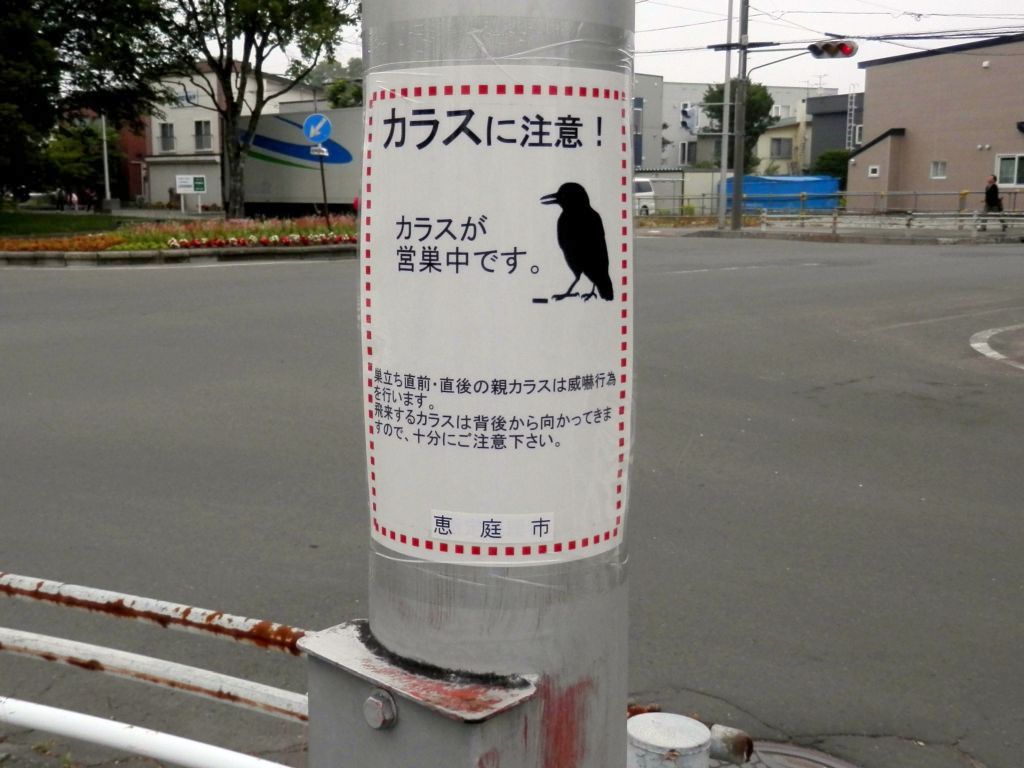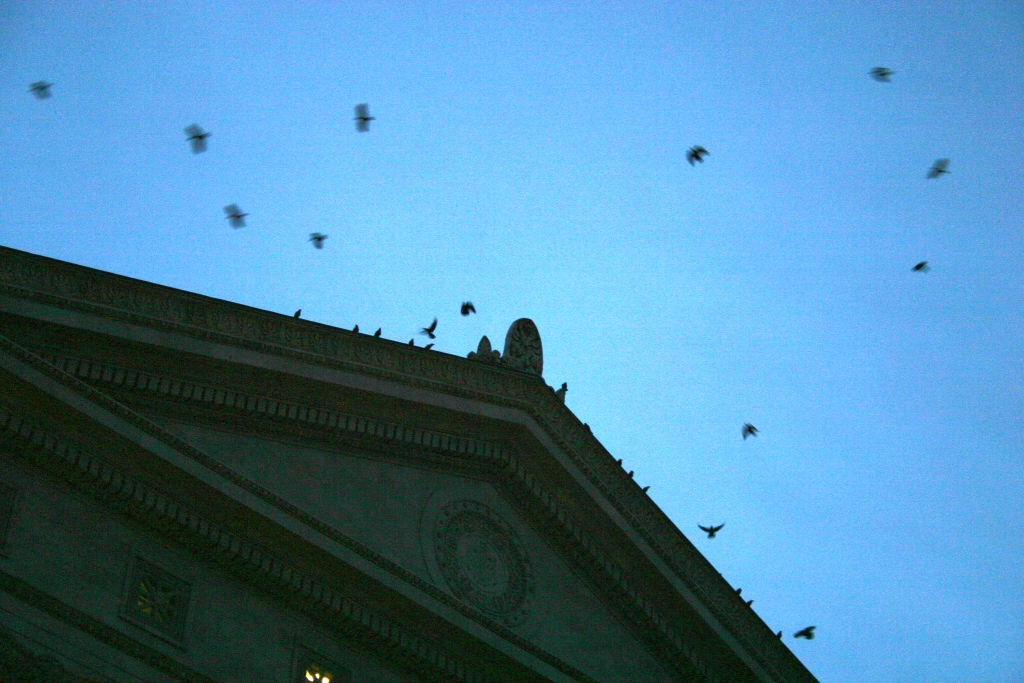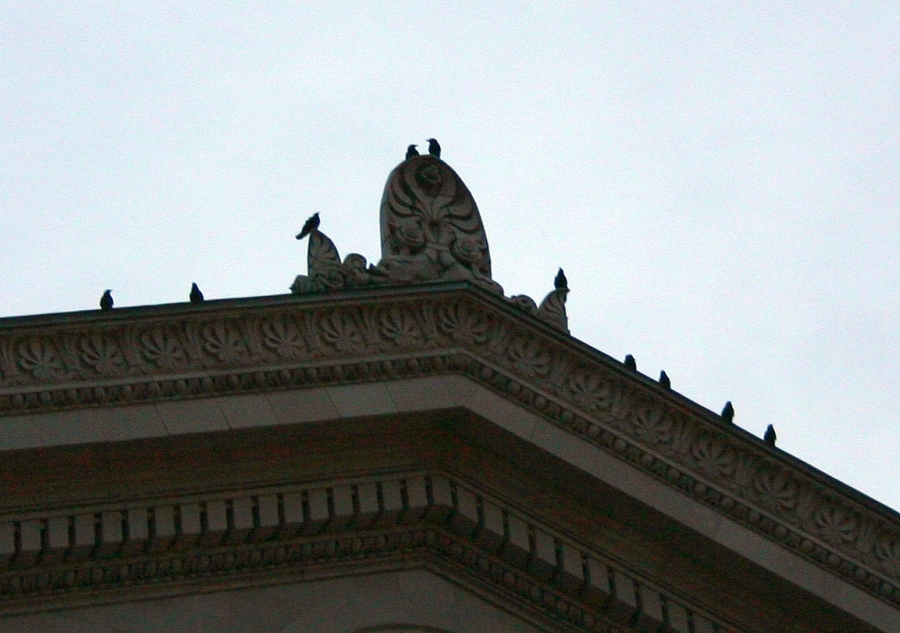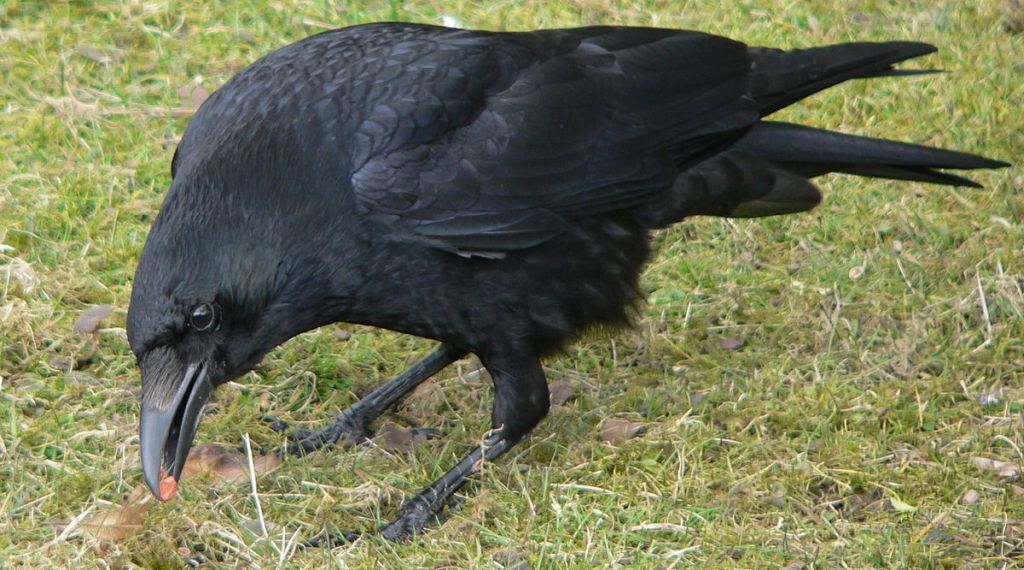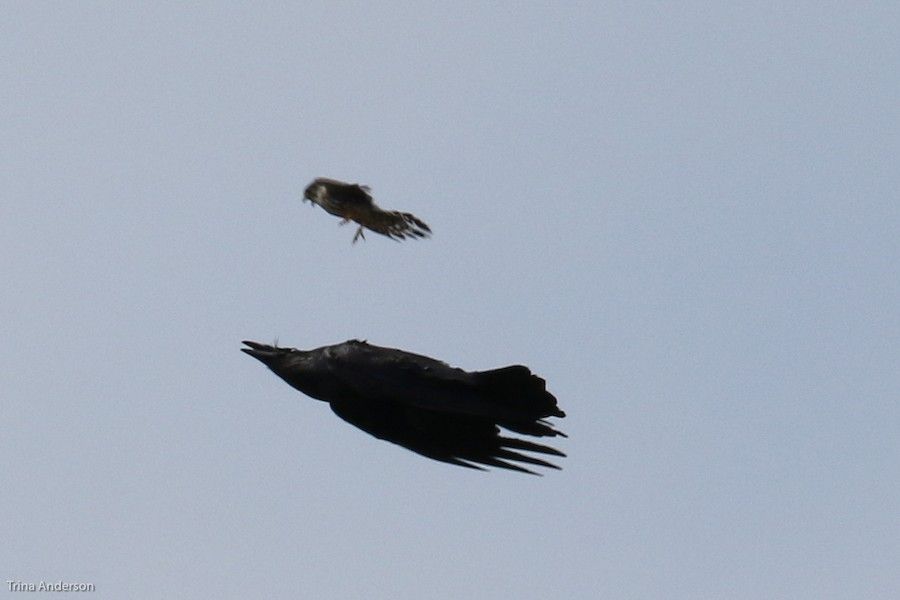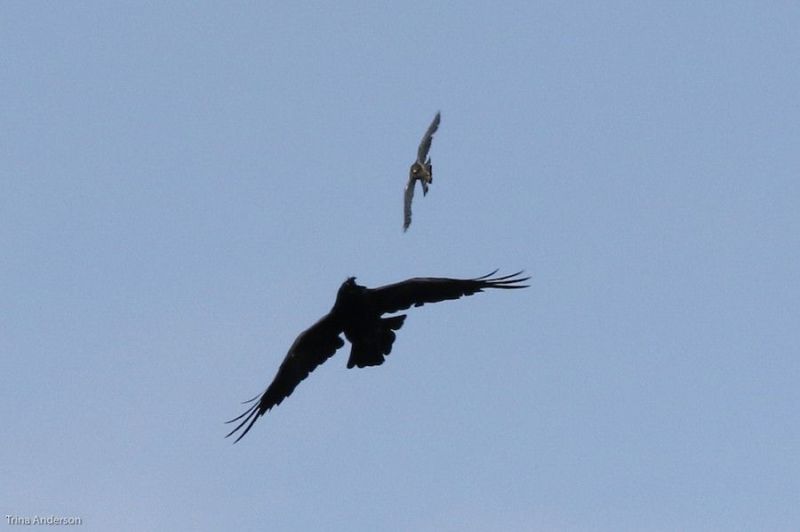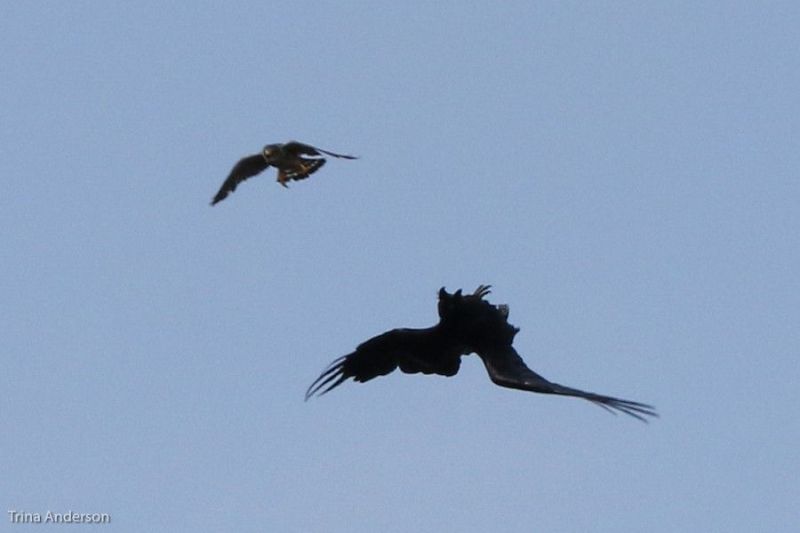31 December 2018
Unimpressed by the University of Pittsburgh’s scarecrow recordings, Pittsburgh’s winter crow flock continues to roost on campus. On Saturday evening, 29 December 2018, Claire Staples and I counted them for the Christmas Bird Count. It was harder than it sounds.
We began at 4pm at the highest vantage point we could find — the top deck of a parking garage between Trees Hall and the Petersen Events Center. From there we could see two huge streams of crows arriving from the south and east, pouring into the trees near Kennard Playground. Unfortunately the playground is over the edge of the hill so those crows went out of sight as soon as they landed.
By 5pm there were so many crows that new arrivals were landing on Trees Hall roof. We were pretty confident we’d counted 10,000 … and then they began to leave. What?!
The crows were headed for Schenley Heights so we followed in the car. We thought they might roost in the Heights but they were restless and on the move. Those in the air were headed for the Cathedral of Learning. We chased them down the hill.
Sure enough, Tennyson Avenue between Alumni and Clapp Halls was “Crow Central.” It was impossible to count them in the air as you can see in Claire’s video.
But I had another way to count them. Since 2016 I’ve tallied Crows-per-tree and Trees-with-crows to get an estimate of the Pitt roost. By car we tallied 45 trees with crows. With an average of 230 crows per tree that’s 10,350 crows at Pitt. Close enough. 10,000.
We think this is only half the crows in Pittsburgh. Claire and I saw just two of the four streams of crows that head to town at dusk from the north, south, east and west.
Where do the crows from the north and west spend the night? Are there 10,000 of them, too? We didn’t have time to chase them.
A clue concerning the origin of the Pitt crow roost
On Saturday Claire and I reminisced about the 2012 CBC when she and three other women counted 20,000 crows from a vantage point in the Strip District. That year a large part of the roost used trees at the closed housing project, Addison Terrace, that was downhill from Kennard Playground. In the spring of 2013 Addison Terrace was demolished and redeveloped into new homes. The first time Pitt had real trouble with crows was in the fall of 2013 when Addison Terrace was no longer available as a roost. Hmmmm!
(video by Claire Staples, 29 Dec 2018)
